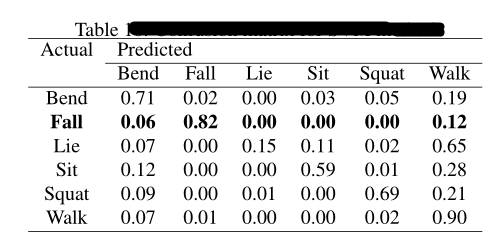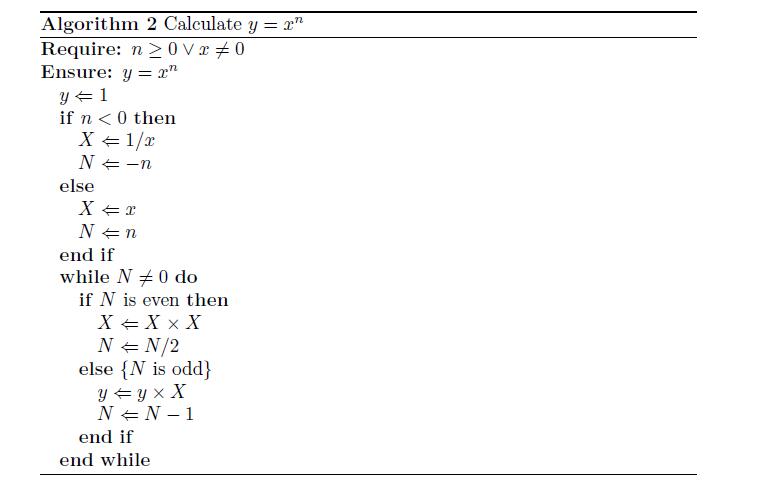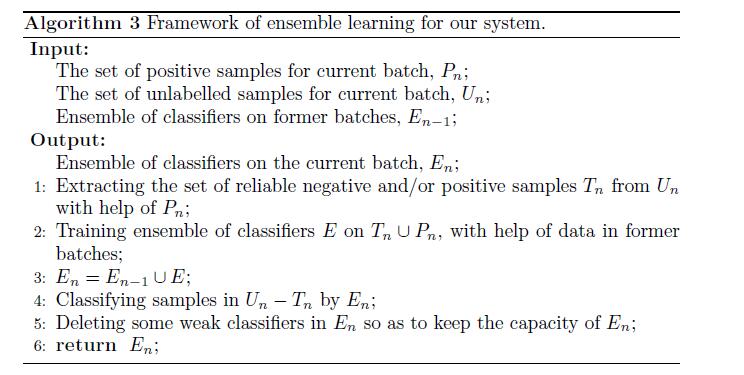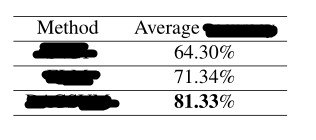博文
论文排版latex常用命令。
||
1.修改图题
在导言区,加renewcommand{figurename}{Fig.}
在text中,这样引用 figurename ref{你的图的label}
这样生成的pdf中都是出现为Fig. 1等。
其次,将默认的“Figure 1:”中的冒号去掉,即修改图注分隔符,可以用caption2宏包:
renewcommand{captionlabeldelim}{.}
如果需要修改图注的字体等,在上面的[]内增加相应的选项即可,例如修改字体为footnotesize:
usepackage[footnotesize]{caption2}
\captionsetup[figure]{labelfont={bf},name={Fig.},labelsep=period}
http://blog.csdn.net/fandroid/article/details/50930137
2.图片格转换 bmeps -c example.jpg example.eps
3.公式编号在左侧 usepackage[leqno]{amsmath}
4.公式以及图表的引用 eqref{equ::1} ref{fig::1}
5. 数学字体
usepackage{ dsfont }
$mathbb{R}$
$mathds{R}$
$mathcal{R}$
mathbb{R}空心
mathds{R}
mathcal{R}花体
6.数学公式

begin{equation}label{equ::1}
text{arg} underset{{U}}{text{max}} sum_{j=1}^{D}sum^{L-1}_{t=1}dot{y}_{j,t}^2quad s.t.quad YY^T=I
end{equation}
多行上下标
第一种方法:我们可以使用命令substack,可以排版多重上标或下标,两行之间用\分隔,居中显示。
例如:begin{equation} sum_{substack{k_0,k_1,dots>0\ k_0+k_1+dots=n}} F(k_i)end{equation}
其运行结果为:
第二种方法:我们可以使用subarray环境来实现多行上下标,且可以自己选择对齐方式。
begin{gather}
sum_{substack{0 le i le m\
0 < j < n}}P(i, j)\
sum_{begin{subarray}{l}
i in Lambda \
0 le i le m \
0 < j < n
end{subarray}} P(i, j)
end{gather}
其运行结果:
第二种方法中的subarray的选项l代表左对齐,也可换为c,r分别代表中心对齐和右对齐
分块矩阵
http://blog.csdn.net/lanchunhui/article/details/53323989
7. 修改字体颜色
usepackage{color}
1. {color{red} 文本}
2. textcolor[rgb]{1,0,0}{文本} 颜色参数范围为[0,1]
8.常用各种表格命令

%begin{table}[!h]%最佳表格
%caption{label{tab::sss} captions }
%centering
%begin{tabular}{ccccccc}hline单元格内的无线分隔
%Actual & multicolumn{6}{l}{Predicted} \ cline{2-7}
% & Bend & Fall& Lie & Sit & Squat& Walk\ hline
%Bend&0.71&0.02&0.00&0.03&0.05&0.19\
%textbf{Fall}&textbf{0.06}&textbf{0.82}&textbf{0.00}&%textbf{0.00}&textbf{0.00}&textbf{0.%12}\
%Lie&0.07&0.00&0.15&0.11&0.02&0.65\
%Sit&0.12&0.00&0.00&0.59&0.01&0.28\
%Squat&0.09&0.00&0.01&0.00&0.69&0.21\
%Walk&0.07&0.01&0.00&0.00&0.02&0.90\
% hline
%%multicolumn{7}{c}{$A$--Our algorithm $B$--spatial moments $C$--enclosing rectangle}
%end{tabular}%multicolumn{6}{@{}l}{$A$--Our algorithm }
%end{table}
% caption{label{tab::AccSixClassSet2} caption }
%centering
%begin{tabular}{cc}hline%newline 单元格内的无线分隔
%%& multicolumn{8}{c}{Bin number} \ cline{2-11}
%S &64.30%\ hline%&96.9%&95.8% % % error rate 15.09%
%E &71.34% \ hline % error rate 6.70%
%D &textbf{81.33}% \ hline
%end{tabular}
%end{table}
9.描述算法
所用宏包
usepackage{algorithm}
usepackage{algorithmic}
begin{algorithm}
caption{A}
label{alg:A}
begin{algorithmic}
STATE {set $r(t)=x(t)$}
REPEAT
STATE set $h(t)=r(t)$
REPEAT
STATE set $h(t)=r(t)$
UNTIL{B}
UNTIL{B}
end{algorithmic}
end{algorithm}




http://blog.csdn.net/lqhbupt/article/details/8723478

http://blog.csdn.net/xiaojidan2011/article/details/34534553
更多算法描述
http://blog.csdn.net/yumengkk/article/details/7540912
http://blog.sina.com.cn/s/blog_5e16f1770102ezhv.html
itemize和enumerate还有description 是LaTeX里列举的三种样式,分别讲一些使用技巧。
itemize(意为分条目):
begin{itemize}
item[*] a
item[*] b
end{itemize}
这样出来的形式为
* b
item的方括号里的内容是为定制前面的符号,可以不要(连同括号),那么前面的符号就是默认的黑点,也可以换为其他的符号,如-,+,等
enumerate(意为编号):
begin{enumerate}[1)]
item a
item b
end{enumerate}
这样出来的形式为:
1) a
2) b
方括号里的内容是定制前面的编号的形式,可以不加,默认就是简单的数字,也可以换成[step 1],[(i)]等,LaTeX可以自动识别。但是要注意,使用了方括号,必须在前面加usepackage{enumerate}.
description(意为描述):
begin{description}
item[item a] a
item[item b] b
end{description}
出来的形式为:
item a a
item b b
方括号的词会作为一个描述出现在item的前面。
http://blog.163.com/chen_dawn/blog/static/11250632013719352254/
把鼠标到winedt界面有数学符号那一横行的空白处点右键,在出现的菜单中选show document tabs 就可以了
latex 生成PDF文件显示行号
可以用lineno宏包
usepackage{lineno}
begin{document}
linenumbers
http://blog.csdn.net/tina_lulu_21/article/details/7689321
在latex中碰到长标题,如果手动换行,需要用到newline(中文环境),但是新的行并不会居中,而是右对齐,
https://blog.sciencenet.cn/blog-597740-1015909.html
上一篇:pattern recognition and machine learning 中文版
下一篇:英文写作常用短语
![LaTex排版技巧:[13]如何排版公式的多行下标](http://f.hiphotos.baidu.com/exp/w=500/sign=bfe211cf6f224f4a5799731339f69044/e850352ac65c10385e5aa92bb0119313b07e8936.jpg)
![LaTex排版技巧:[13]如何排版公式的多行下标](http://g.hiphotos.baidu.com/exp/w=500/sign=707485e68594a4c20a23e72b3ef61bac/79f0f736afc37931aca9e2c0e9c4b74542a91111.jpg)
